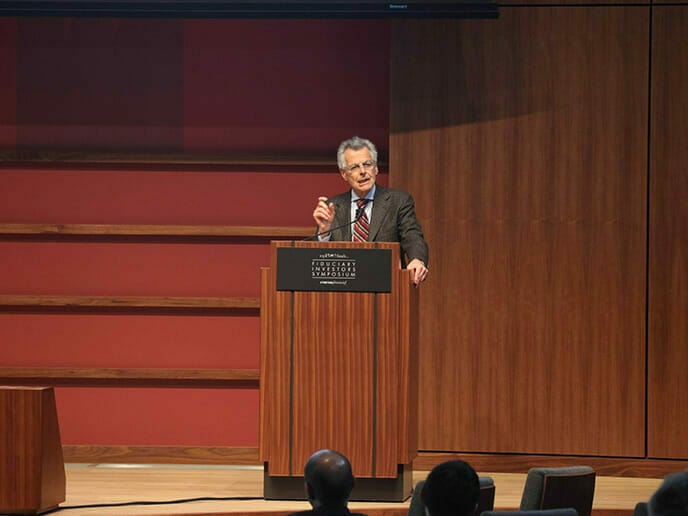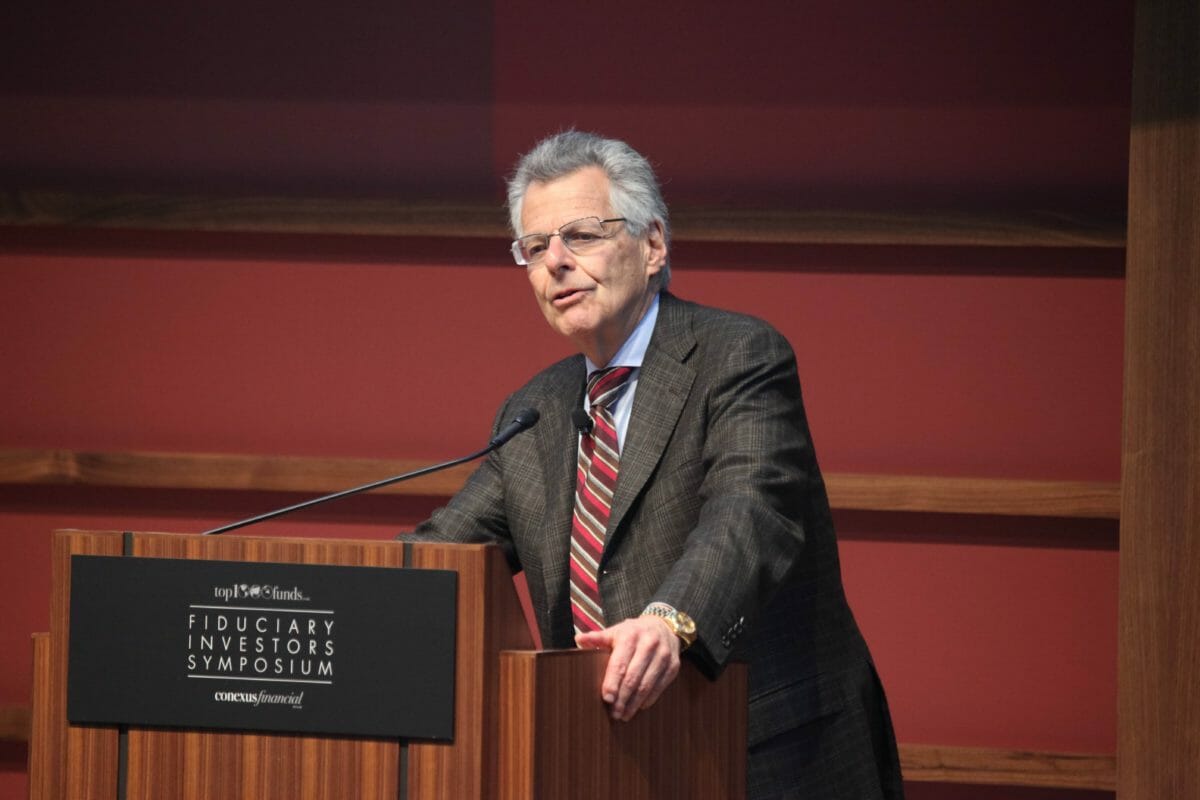
Investors need to be patient and harvest the power of compound returns, urged Myron Scholes, the Frank E. Buck Professor of Finance, emeritus, at Stanford University, and a Nobel laureate in economic sciences.
Speaking at the Fiduciary Investors Symposium at Stanford University, Scholes also urged investors to use option prices as a source of information about risk to enhance compound returns. He said many investors ignored this valuable data that exists in the market.
Examining option prices would allowed investors to reduce losses from market downturns and better participate in the upside, Scholes explained. Think of the investors forced to sell during the GFC who were never able to participate in the ensuing upside, he told delegates.
“If they had lost less, they would have had more power to enhance returns going forward,” he said.
Scholes explained that the option market acted like a warning sign, telling investors what “the crowd” was saying and how the probabilities of gains and losses had changed. If the price of options, or insurance, goes up, it means the risk has gone up. He urged investors not to measure everything in “the rearview mirror” but to look into the future and warned that excessive volatility – deduced through option prices – reduced compound returns. He said options also allowed investors to “compute the tails” and work out expected tail gains and losses.
Scholes told delegates that many investors see risk as a risk of loss, and not as a risk of volatility. He also noted that many investors have tracking error constraints in place, underscored by a belief that they shouldn’t deviate too much from the benchmark and benchmark returns. Yet he urged investors to look more at how performance compounds over time. He said compound returns were very different to the average returns, or Sharpe ratios, that investors measure. Compound returns are not determined by “little averages” and “standard deviations” or “ups and downs over each period”, he explained, they are determined by tails of distribution. These big losses or big gains are the events that matter to investors.
“It is like our lives,” he said. “It is not the little things but the big things that we remember.” The tails, or things that happen in the extremes, are where investors should focus; Scholes said tail distribution was where “the action is” rather than “the middle” and that “focusing on the extremes has the most value for everyone”. He urged portfolio managers to move on from static allocations.
Scholes also told delegates the benchmark constraints that passive investors favoured could be costly because they stopped investors from reducing risk. He said that when markets grew rocky, asset managers tended to go to the benchmark rather than switch to cash.
“The benchmark is their safe harbour,” he said; however, this is not always the best way to invest. People say passive strategies with a low tracking error are low cost, yet these strategies don’t have any risk management, he warned. Passive and benchmark-static strategies are risk-changing strategies; sometimes the risk is high and sometimes it’s low. The cost of monitoring managers goes down with passive strategies, yet there is also a cost in lost returns inherent in tracking error constraints, which he calculated could be 2-3 per cent a year.
Scholes said many investors focused on building strategic portfolios, best-sector allocations, and securing the managers who give alpha. He called this “clapping with one hand”. The other hand should be measuring risk and looking at how volatility changes how the tails of the distribution are being affected.
Scholes also highlighted challenges around diversification. He said all growth assets could become highly correlated. He told delegates that “diversification is free when you don’t need it” but when you do, assets become highly correlated.



